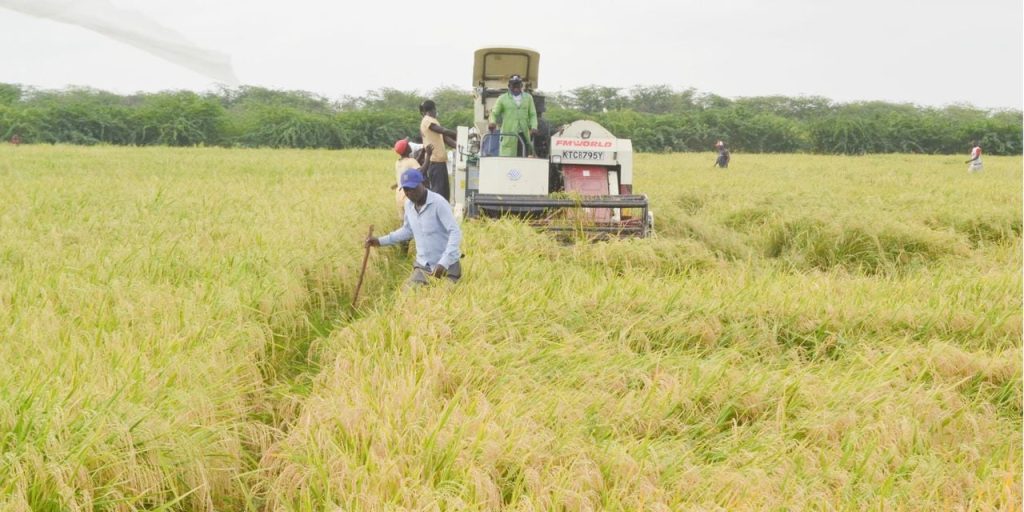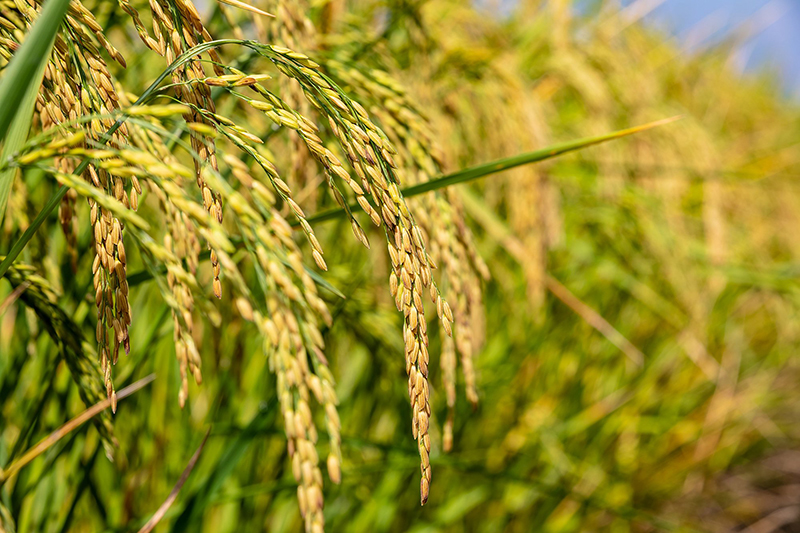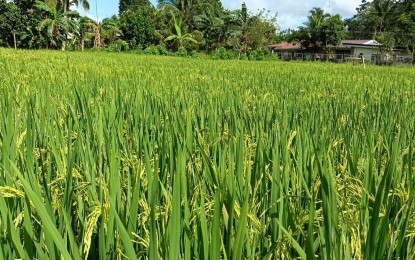Tags
How rice farming is hurting the planet

What you need to know:
- Rice paddies in Sub-Saharan Africa, including Kenya, largely contribute to the rise in global emissions of the second most important greenhouse gas — methane.
- The United Nations Environment Programme explains that methane is a dangerous air pollutant and greenhouse gas that is 80 times more potent in global warming compared to carbon dioxide.
- This is because its impact stays longer in the atmosphere despite it having a shorter life span of just about 12 years.
When former Agriculture and Livestock Cabinet Secretary Mithika Linturi was invited to Parliament last year to speak about maize shortage in the country, he recommended rice as an alternative menu to edge out ugali on Kenyans’ tables.
In the same year, the International Rice Research Institute released data that showed that Kenya’s rice consumption had increased by about 12 per cent.
This, they said, indicated that demand for rice would likely topple ugali and thus Kenyan rice farmers needed to increase production.
However, a new study published earlier this year shows that rice paddies in Sub-Saharan Africa, including Kenya, largely contribute to the rise in global emissions of the second most important greenhouse gas — methane.
The United Nations Environment Programme (Unep) explains that methane is a dangerous air pollutant and greenhouse gas that is 80 times more potent in global warming compared to carbon dioxide.
This is because its impact stays longer in the atmosphere despite it having a shorter life span of just about 12 years.
Unep says that exposure to methane may lead to about one million premature deaths every year.
“Paddy rice cultivation — in which flooded fields prevent oxygen from penetrating the soil, creating ideal conditions for methane-emitting bacteria — accounts for another 8 per cent of human-linked emissions,” explains Unep. Data from the International Energy Agency shows that methane is currently responsible for about 30 per cent of the current global rise in temperature.
The new study published in the scientific journal Nature Climate Change was conducted by atmospheric scientists and engineers from Harvard University in collaboration with those from the California Institute of Technology’s Jet Propulsion Laboratory.
Their findings show that African rice emissions have contributed 31 per cent of the recent trend in African emissions and seven per cent of the trend in global methane emissions.
“We show that rapidly increasing rice cultivation is another important source. Continued rice expansion to feed a rapidly growing population should be considered in climate change mitigation goals,” shows the study.
The researchers compared their findings on methane emissions caused by rice paddles before the year 2008 and used data for the period between 2008 and 2018, where studies show that rice production in Africa doubled.
“The Global Methane Pledge aims to reduce methane emissions by 30 per cent from 2019 levels by 2030, but feeding the rapidly growing population in Africa is expected to drive more aggressive expansion and intensification of rice cultivation in the years ahead. This may require an even greater reduction of methane emissions from other sectors,” explain the scientists.
A past assessment by the Intergovernmental Panel on Climate Change on methane emissions from rice cultivation shows that different factors come into play when it comes to methane emissions from rice paddies.
“Emission factors depend on cultivation method (wet versus dry cultivation), water management practices, type of rice variety planted and cropping patterns,” they explain.
“Most long-term scenarios assume that the emission factor of methane per unit area of rice cropland remains constant with time, although estimates vary greatly from one scenario reference to another,” they add.
In a 2022 analysis published by the World Wildlife Fund (WWF), the researchers give some of the solutions to reducing methane production in farms; giving examples of how major rice-producing countries are coping.
One of the solutions, they say, is to use a machine called a happy seeder, which works by cutting and lifting paddy straws in rice fields and sowing the crop at the same time.
A study published by the scientific journal Science shows that this machine slashes emissions by more than 78 per cent since it prevents farmers from burning after harvest season.
“If accomplished at scale, there would be several benefits. Farmers could earn revenue from the sale and use of the stubble, while it would simultaneously reducing emissions from flooding and burning. Since rice is heavily grown in many countries where wood is scarce (such as China, India, and Bangladesh), it could prevent the harvesting of very young wood and allow trees to sequester more carbon as they mature,” explained the WWF analysis.
The scientists who published the new study recommend that more research is needed to exploit satellite capabilities for inventory verification and determining land-use changes that are linked to new rice cultivation areas, and for providing prior emission estimates to use in top-down analyses of methane emissions.
At the 28th conference of parties that took place in Dubai, United Arab Emirates, more than 150 countries pledged to reduce methane emissions.
The global goal is to cut emissions by 30 per cent from 2020 levels, by the year 2030.
In a reaction to the pledge signed at the climate conference, UN Secretary-General Antonio Guterres said signing that agreement was a ‘step in the right direction.’
https://nation.africa/kenya/health/how-rice-farming-is-hurting-the-planet-4515638Published Date: February 7, 2024






